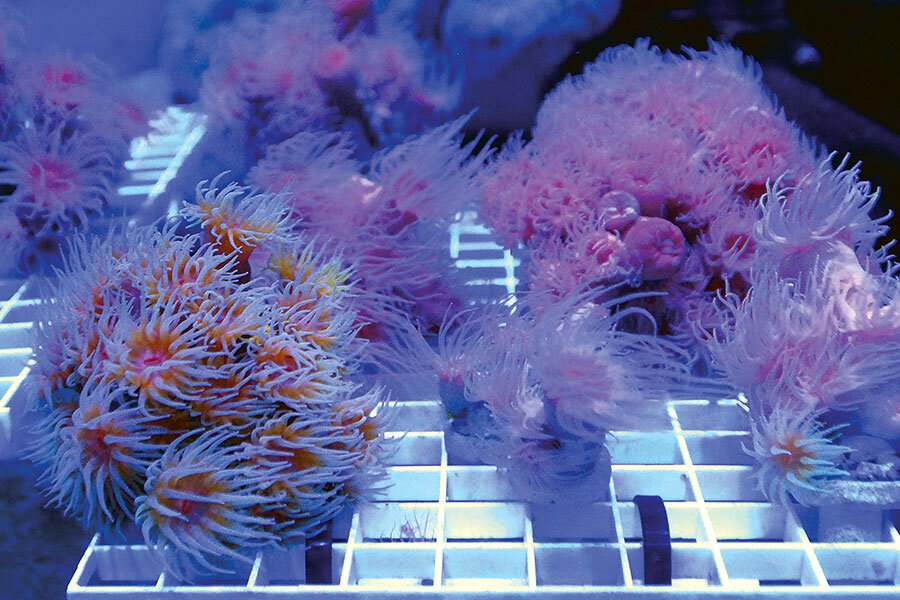Meanwhile... in Guam, the US Navy is trying to grow coral in a nursery
Loading...
In Piti, Guam, the United States Navy is trying to grow coral in a nursery.
Coral reefs are estimated to host about 25 percent of all marine life worldwide. But changes in the planet’s oceans have placed these ecosystems under stress, leading to coral bleaching and other events that scientists fear could result in permanent damage to and decline in coral reefs.
That’s why the Navy – in collaboration with the National Oceanic and Atmospheric Administration and other groups – is testing the viability of a coral nursery.
During spawning season, researchers collected reproductive cells released by local coral. These were placed in deep pools with special tiles, to which they could attach and grow. Within the next year the growing coral will be transplanted to a reef – where scientists hope they will thrive.
This is the first time the Navy has attempted a project of this type, according to a statement from the Naval Facilities Engineering Command Marianas.
In Addis Ababa, Ethiopia, designer Yamerote “Yami” Mengistu has been making and selling fashion merchandise since 2004 in her native Ethiopia. One of her major goals: to providegainful employment for Ethiopian women.
A few years ago, Ms. Mengistu got a major boost from an unexpected source, according to Selamta magazine. In 2013, Joanna Gaines, star of HGTV’s megahit home-design show “Fixer Upper,” caught a glimpse of a tote bag of Ethiopian leather made by Mengistu’s company, Rosa Abyssinica. Ms. Gaines proclaimed it her “favorite bag” and put it on her popular Magnolia Market shopping site.
Online orders for the bags have been pouring in ever since. Mengistu, who started her company with two fellow workers, now employs 40 women.
In Ulaanbaatar, Mongolia, Irish golfer Adam Rolston has earned himself a spot in the Guinness World Records for completing the longest golf hole in history. The distance from tee (on the western edge of the country) to green (the 18th hole at Mt. Bogd Golf Club, the country’s only golf course) was – yes, really – 1,250 miles.
Mr. Rolston and his friend and caddie Ron Rutland, who traveled 80 days across Mongolia to complete the record, were also raising money for children’s charities.
Rolston took 20,093 shots (6,093 over par) and lost dozens of golf balls, according to The Telegraph, which first reported the story. The two men also had the moral support of a stray dog that followed them for more than 900 miles of their journey. They are now seeking a good home for their faithful companion, they told The Telegraph.





